
Clout and selling to Generation Z
As one of the few Gen Xers at a retail market full of Generation Z entrepreneurs the other day, I asked the typical corporate question: ‘how are sales doing?’. I think they had to do everything possible to quell an eye roll. They then told me, ‘It’s about clout, not on-the-ground sales’. Now, I’ve always thought of clout as influence, or hitting someone. The Generation Z entrepreneurs were patient enough to explain that ‘clout’ is your being there and respect for the vibes or style you give off.
In my frame of reference, sales and deals closed are the barometer for successful attendance at a retail market. But not for Generation Z. That is not to say that the sales won’t materialise. They explained to me that it is about positioning yourself to be a primary online purchase choice. That is their primary trading market, both as buyers and vendors.
Who the generations really are
We often get confused by how generational categories are defined. Is a generation 10 or 15 years? Or are they bonded by age group? Alternately, are they defined by cultural events and trends that bind?
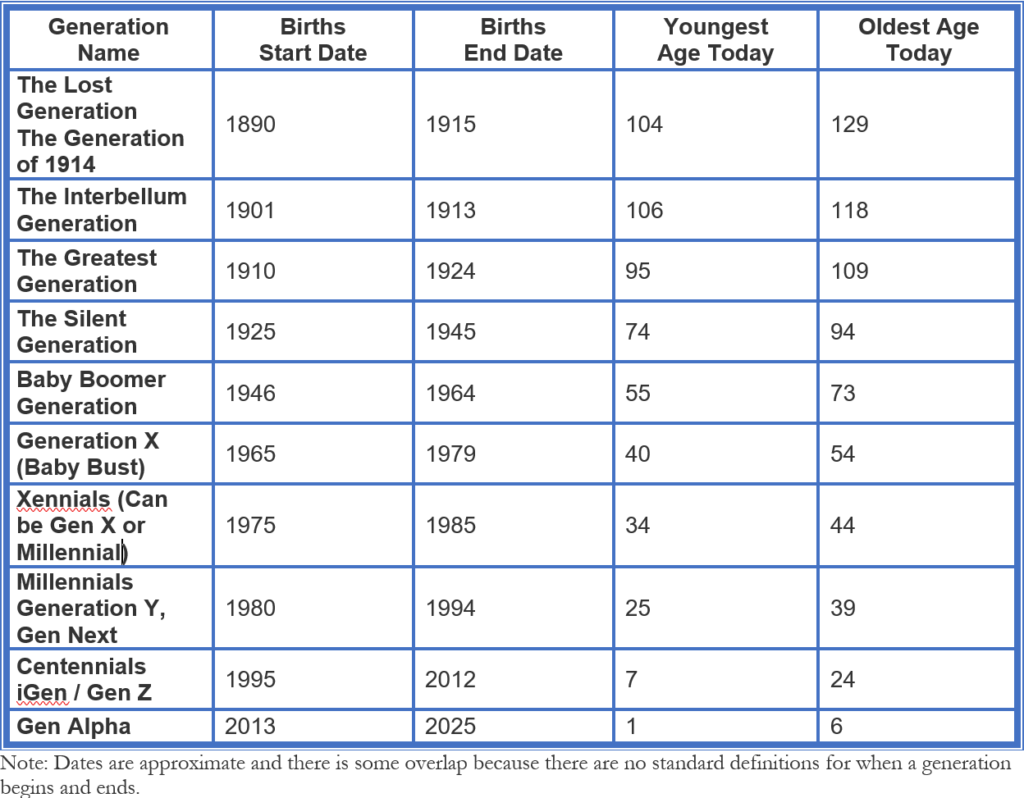
In reality, it’s a combination of all these factors. However, cultural events and trends of their time are the primary factor that bind these groups, because of the commonalities of mindset. This is the reason that the margins of generations can be blurred and overlap.
The Generation Z/ Millennials market
One should first look at the real potential of these market segments.
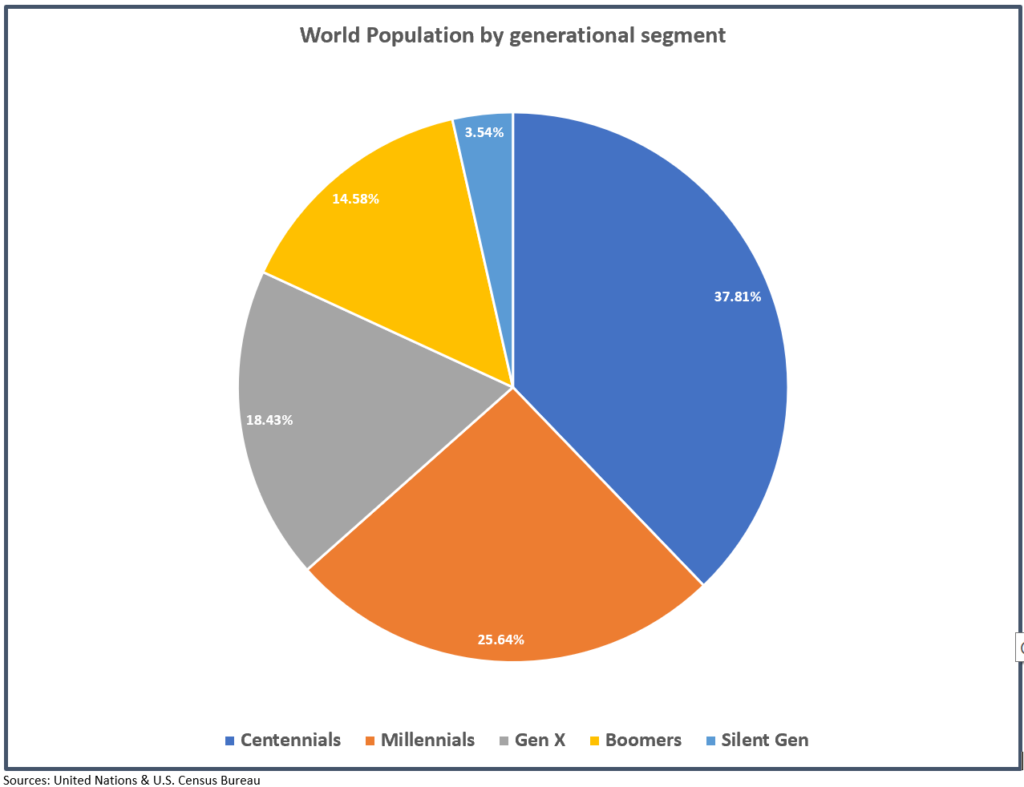
So, the above statistic embedded the thought in my mind that we must learn to target these generations differently than we currently do. But before jumping a knee-jerk conclusion, I dug further into these generations’ spending potential.
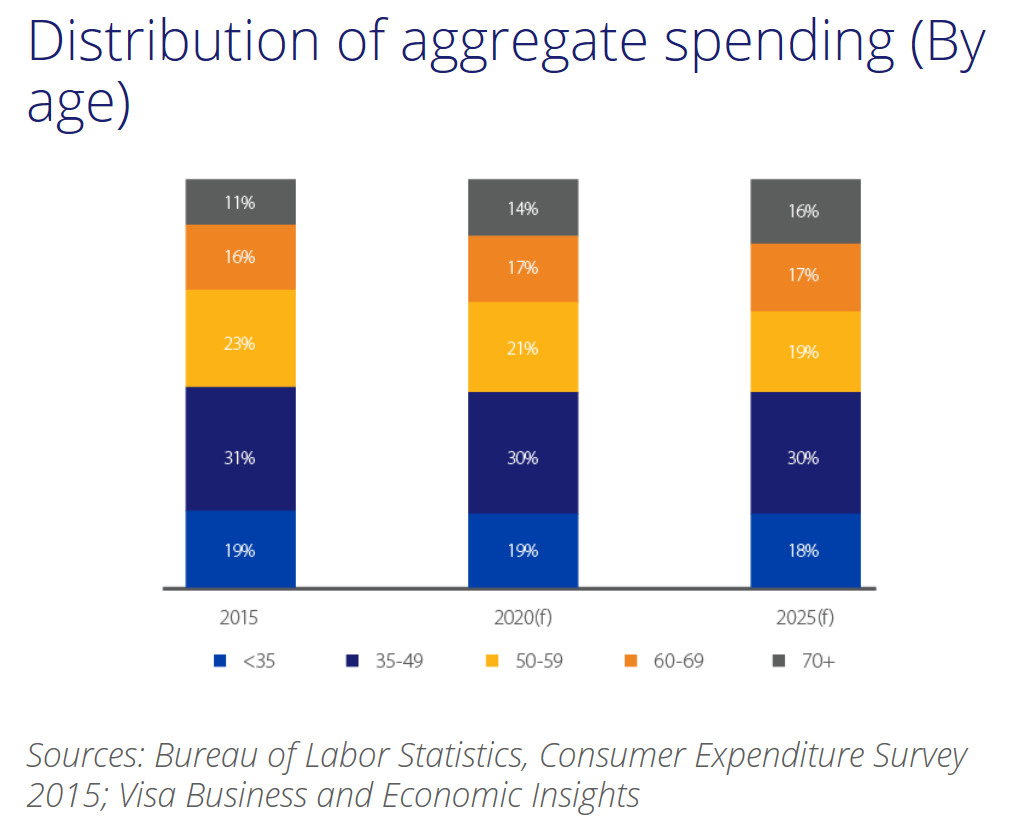
Contrary to their composition of the population, Generation Z and millennials in the U.S. currently spend only a third or so of their representation across the population. This share of spend is sure to be even lower for the rest of the World. So, do we ignore them as a core market because of lower spend versus their numbers in the population? At your peril! Look at it another way. By 2025, those currently classified as Generation Z and millennials will hold the bulk of every 50¢ of every $1 spent in the U.S. And what about by 2030? Their share of spend will have grown dramatically; probably to well above half of all spend. In essence, companies have 5 to 10 years to adapt and evolve with this market segment.
The divergence of Generation Z and Millennials
Now that we know that we know that we only have 10 years, at most, to correctly target these two generational groups, comes the tough part. There are huge differences, not only in psychological profile of these two generations, but in how and where to get their attention. The writings on this have been many and consistent, but I’ll just reference two. Both, Hiral Patel and McKinsey & Company have covered the topic well. Patel’s analysis summarizes as follows:
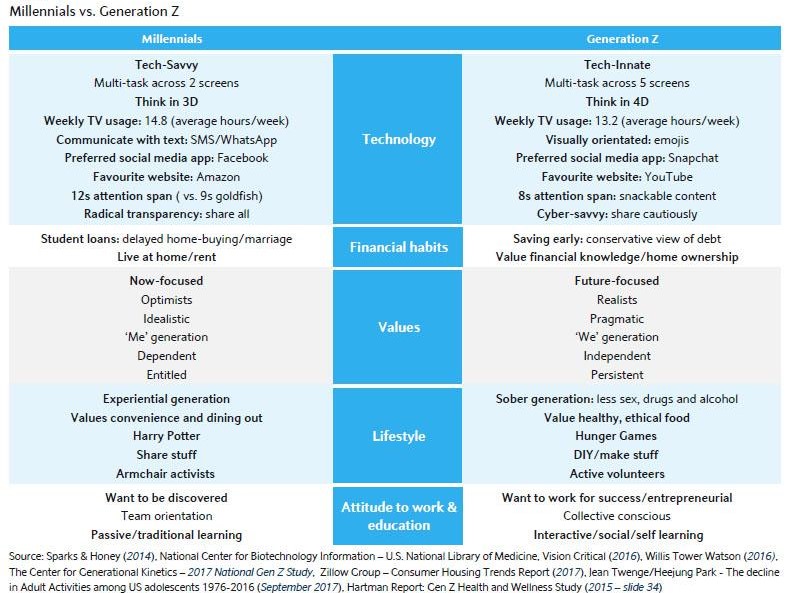
McKinsey and Company goes into further detail https://www.mckinsey.com/industries/consumer-packaged-goods/our-insights/true-gen-generation-z-and-its-implications-for-companies and in summary, it is clear that targeting these two generations will require a difference in approach to today’s targeting, to be effective. This will drastically affect targeting approaches that have been dominant over the past 50 years.
These fall under 5 key areas:
- Media.
- Technology.
- Content.
- Purchasing channel.
- Purchase decision triggers.
Gone are the days of mass media and one way seller to buyer messaging and targeting. Just as we thought we were beginning to understand the importance of targeting millennials through digital and social media, the game has begun to change yet again. Successful companies will have to be able to target across the three categories as follows:
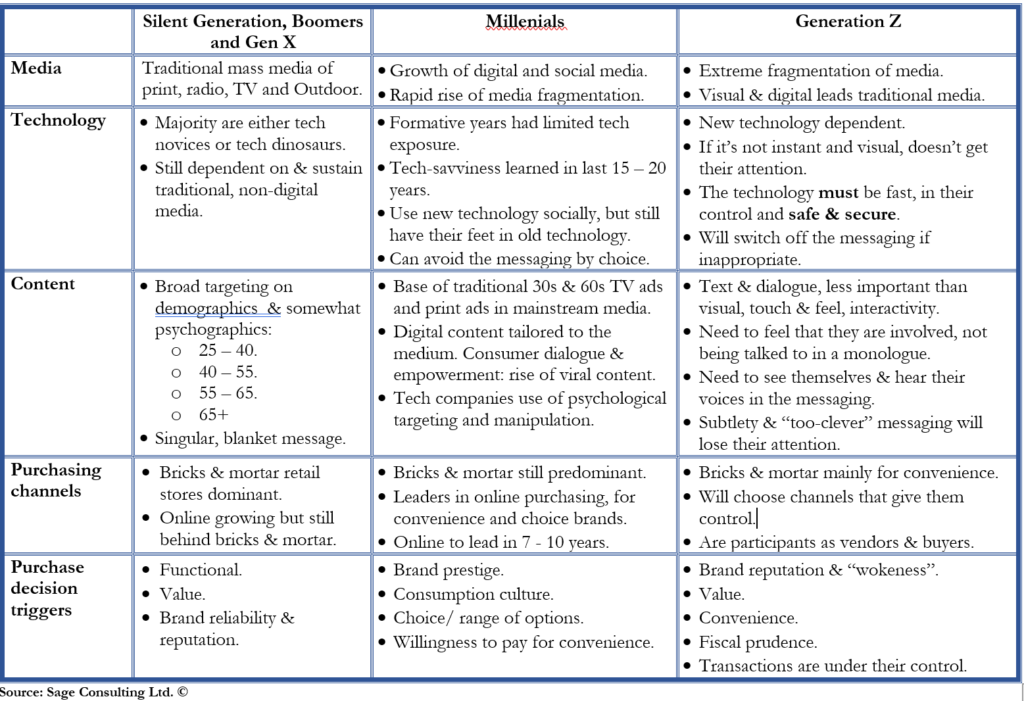
Coming back to “clout”
It should be stressed that the only way brands can be successful in the endeavor of targeting these generations of diverse age groups, is to focus content and messaging on commonalities in attitudes and mindset, more than age demographic. However, finding the consumer segments in the right place at the right time, will be based on age group, as this is drives lifestyle and habits, that are the primary determinant of media and technology adoption.
Remember that definition of ‘clout’ that I was given by the Generation Z entrepreneurs? Well, if they don’t feel that you are “there” with them, nor garner their respect for the style and vibe that you give off, they will reject you. You must be able to do so, without alienating and while retaining your current core market segments.
For strategic advisory that will leverage uncommon sense and drive your bottom line, get in touch with us on [email protected]
Follow on:



